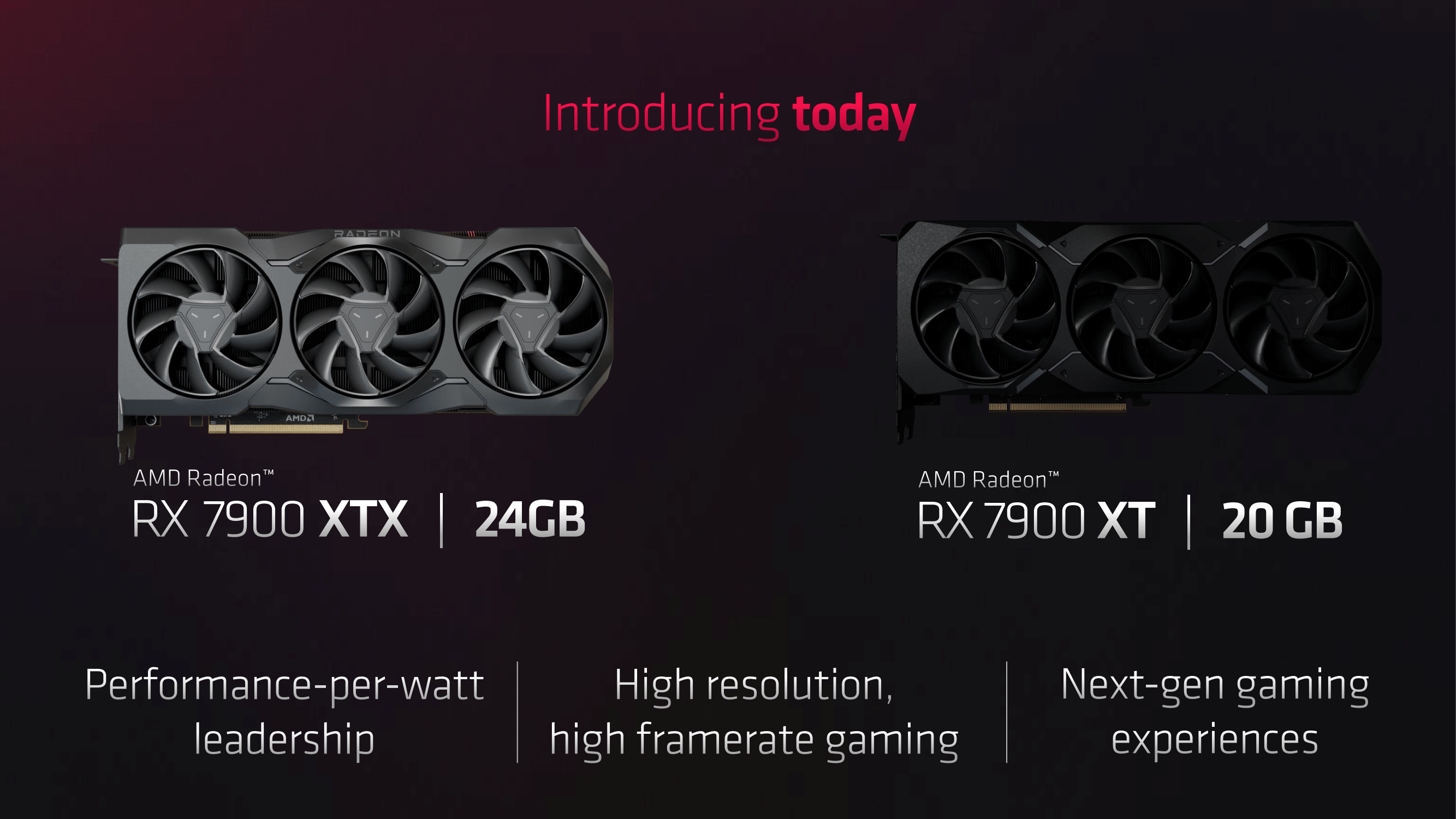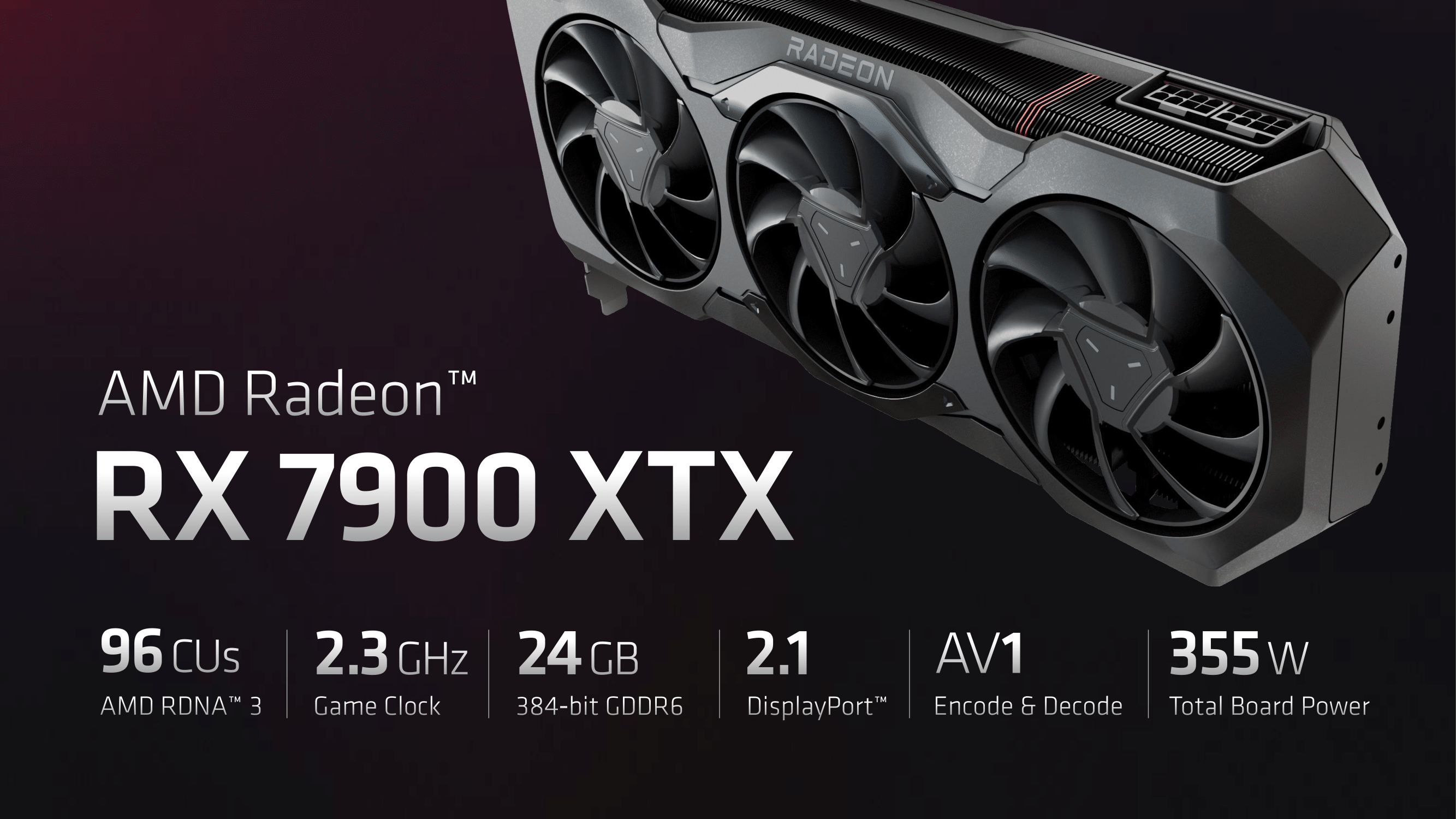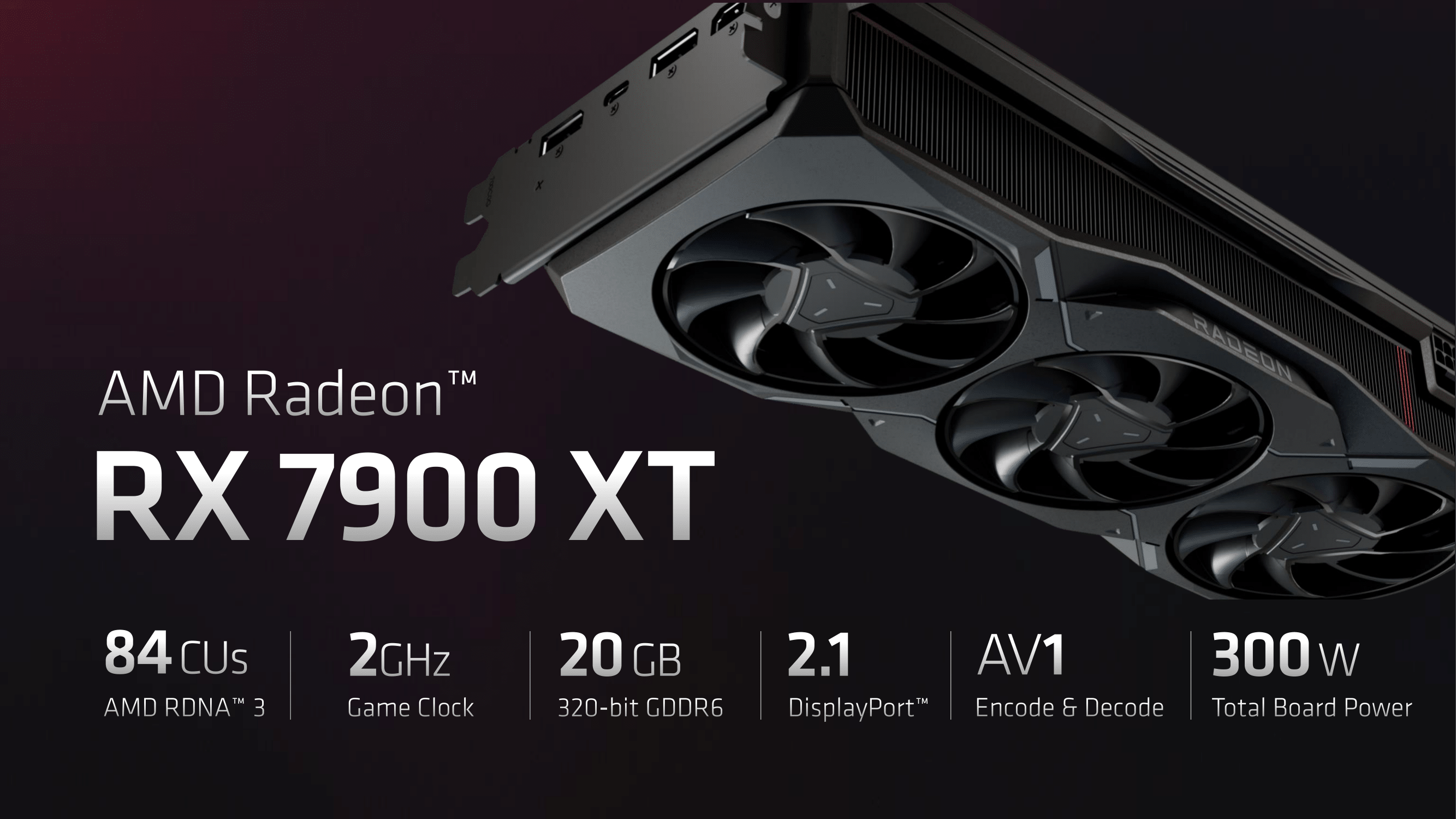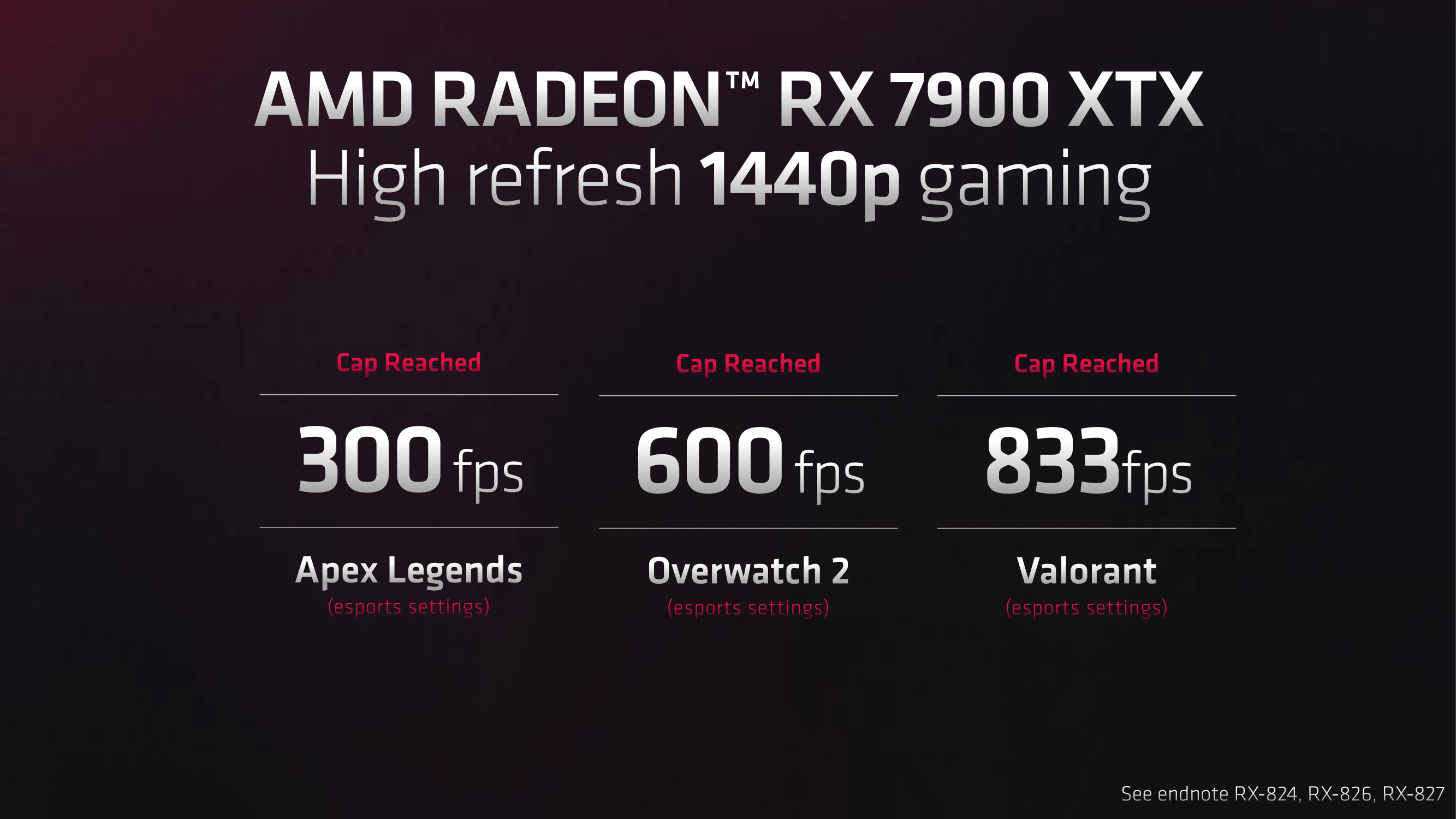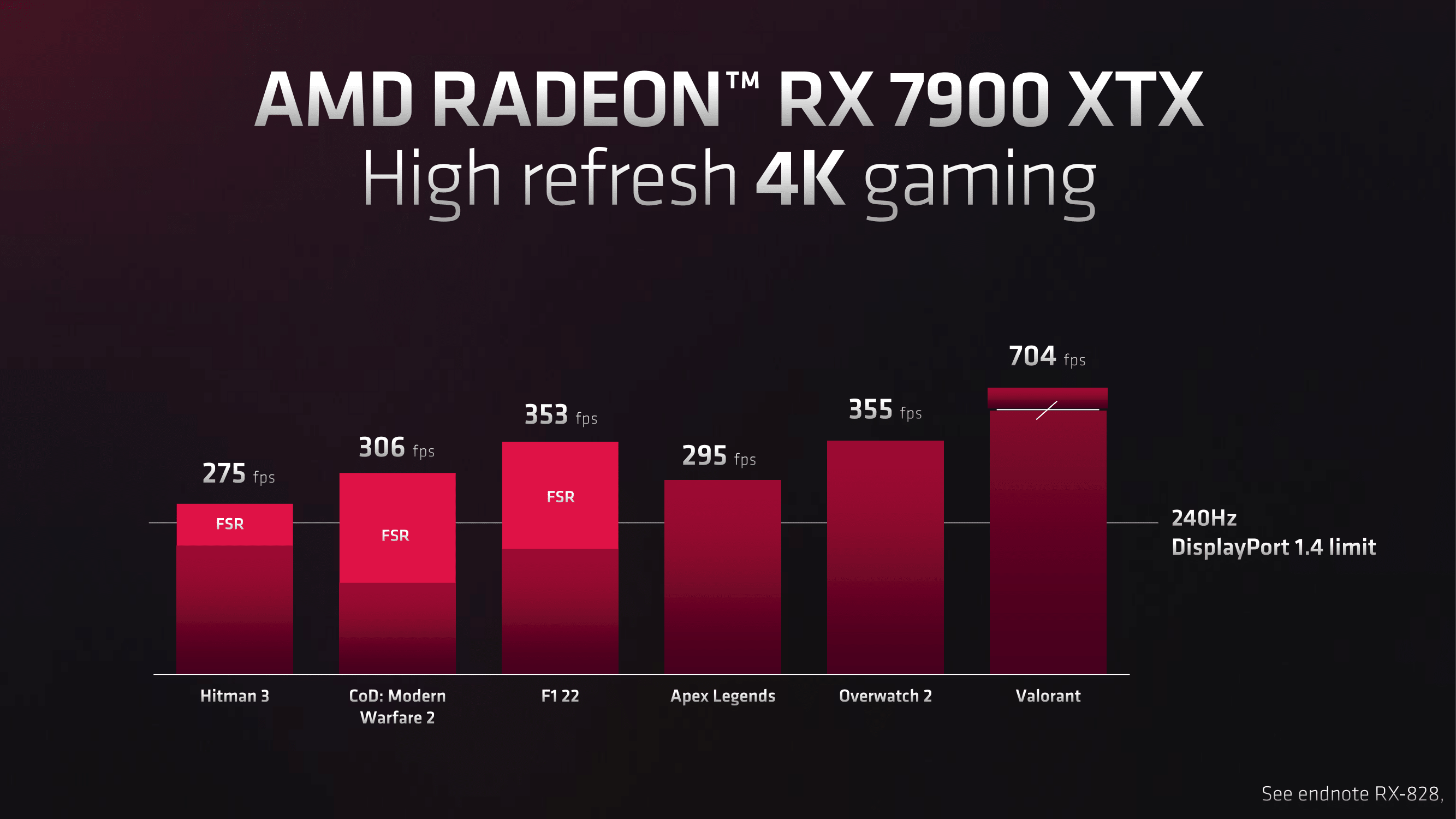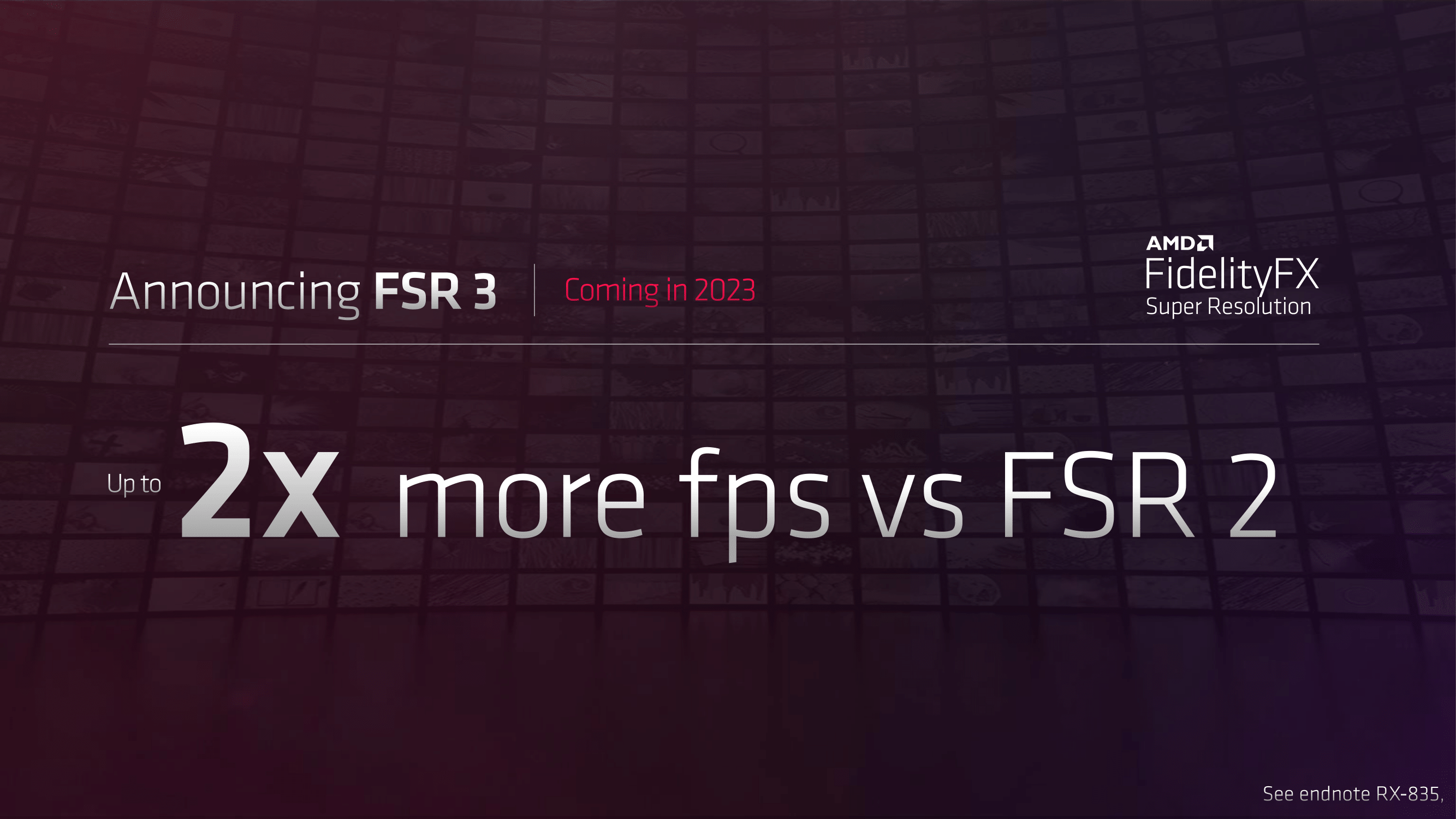So let’s talk performance, first of all. AMD has highlighted that these top of the line RX 7000 cards should be up to 70 percent faster than their predecessors, with 1.5x better FPS figures in COD: MW2 for instance, and 1.7x in Cyberpunk 2077. AMD is accomplishing this through a new chiplet-based design, which combines a cutting-edge 5nm process for the graphics compute die and six 6nm memory cache dies plumbed together via a 5.3TB/s interconnect. Using a chiplet design should allow for improved yields and lower costs of manufacturing, whhich should translate into lower consumer prices. This idea formed the basis of Ryzen’s success in the desktop CPU space, so it’ll be especially interesting to see how they work in the GPU space too. Elsewhere, AMD is saying the right things for people dissatisfied with Nvidia’s RTX 40-series announcements. Power targets haven’t shifted significantly, the cards are a reasonable size, only two eight-pin power inputs are required, rasterisation performance looks good and DisplayPort 2.1 is included - so all in all, exciting stuff. For more of an in-depth look at what the DF team makes of all things RX 7000, then it’s worth taking a look at the DF Direct from this time last month where there’s discussions on the cards themselves, their chiplet design, FSR 3.0, and a whole lot more! Of course, the review is forthcoming, and when that breaks cover, I’ll definitely be shouting about it. However, we don’t yet have performance data on the RX 7900 XT. Looking at the specs, we’d expect to see a 15 to 20 percent reduction in frame-rates, as we see a similar range of spec reductions in terms of CUs, game clock, memory interface, board power and so on - despite just a $100 difference in price. Elsewhere, the RX 7900 XTX looks like a capable contender in rasterised (and to a lesser extent RT) performance. AMD performance figures include maximum possible frame-rates for Apex Legends, Overwatch 2 and Valorant at 1440p, 275 to 704fps at 4K with FSR in games like Hitman 3, Modern Warfare 2 and F1 22. Elsewhere, the 7900-series cards also include DisplayPort 2.1 support, allowing up to 8K 165Hz or 4K 480Hz displays (neither of which exist yet). AV1 encode/decode support and dual media encoders are also included, in a boon for streamers and content creators. This would suggest that the anticipated cheaper manufacturing costs associated with a chiplet-based card are being passed onto consumers by way of a price decrease, which is especially nice to see, given the sheer mammoth of the RTX 4090’s MSRP. We’re expecting to learn more details on the release schedule as the date approaches, including which retailers will stock the cards, what reference and third-party designs will be available, and so on.
